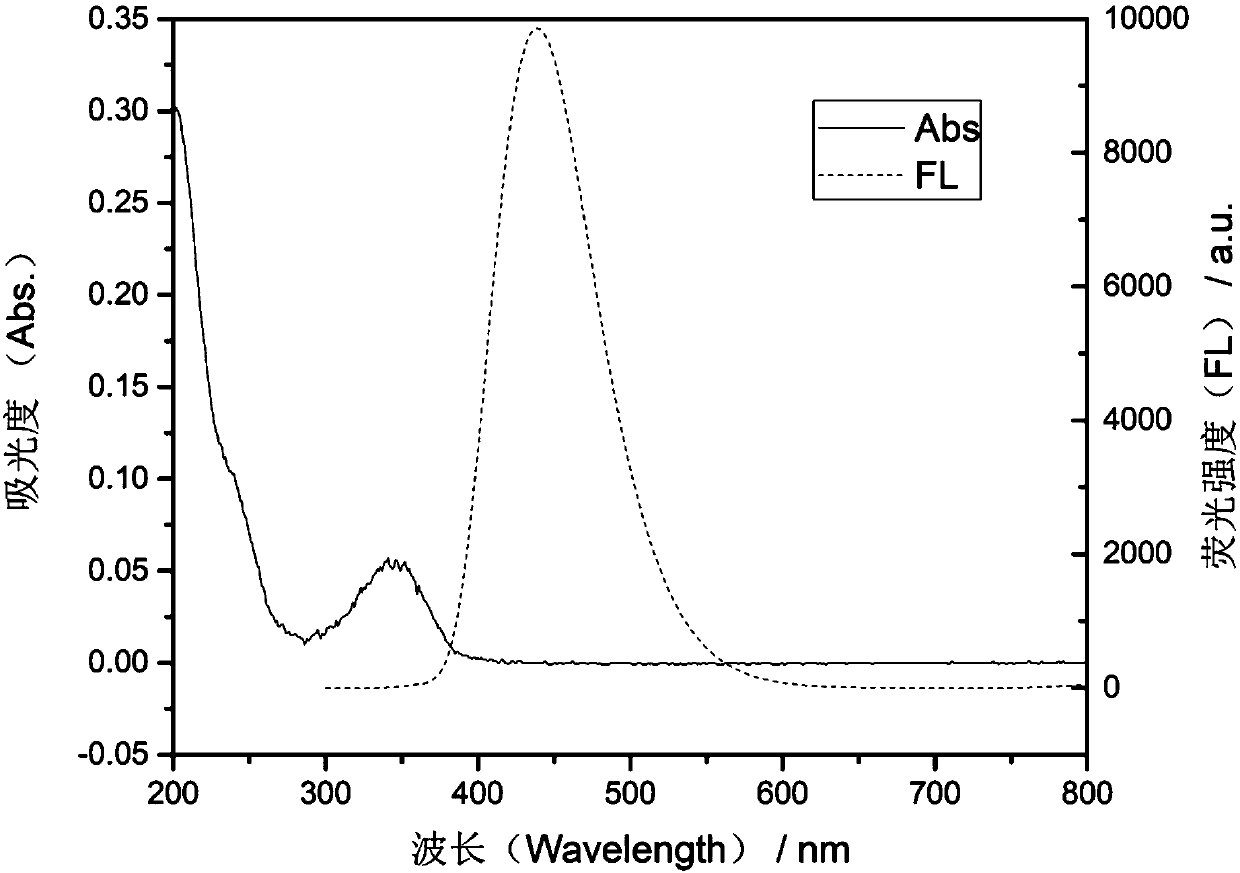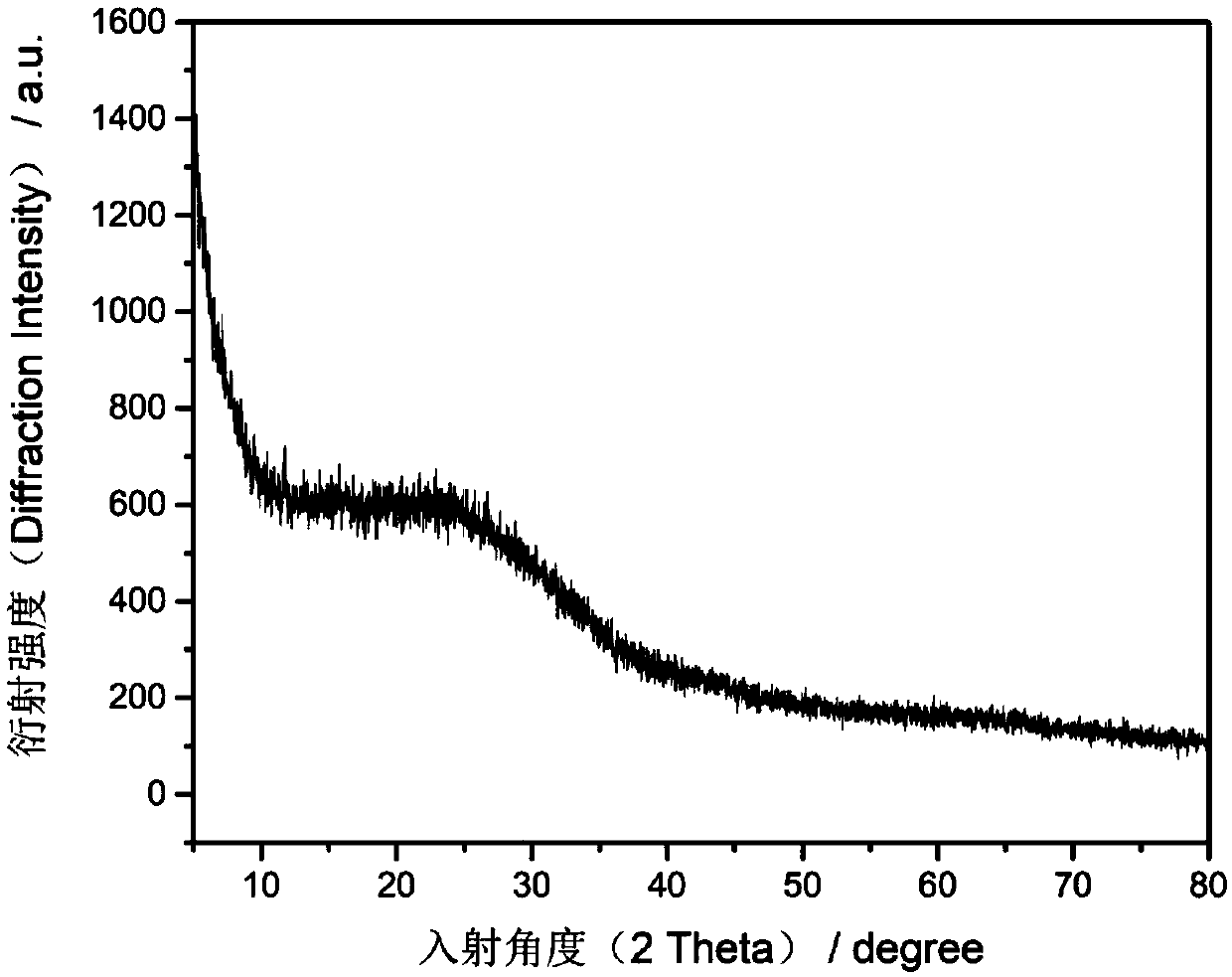Preparation method for carbon quantum dot with high fluorescence quantum yield and application of carbon quantum dot in cell imaging
A technology of fluorescence quantum yield and carbon quantum dots, applied in the field of nanomaterials, can solve the problems of low quantum yield, not reaching quantum yield, etc., and achieve the effects of simple synthesis method, superior biocompatibility, and high fluorescence yield
- Summary
- Abstract
- Description
- Claims
- Application Information
AI Technical Summary
Problems solved by technology
Method used
Image
Examples
Embodiment 1
[0034] A preparation method with high fluorescence quantum yield carbon quantum dots, comprising the steps of:
[0035] (1) Dissolve 1.5 g of citric acid monohydrate and 0.57 g of L-cysteine in 10 mL of deionized water, and fully dissolve to obtain a precursor solution;
[0036] (2) Move the obtained precursor solution to a microwave oven, heat the reaction for 4 minutes at a power of 1300W, and naturally cool to room temperature to obtain a paste solid;
[0037] (3) Add 10 mL of water to dissolve the paste solid obtained in step (2) to obtain a suspension; then centrifuge the suspension at 9000r / min for 10 minutes in a high-speed centrifuge, take the supernatant, and use a 0.22 μm needle to remove the supernatant Filter through a pore filter and collect the filtrate, which is the carbon quantum dot solution;
[0038] (4) Dry the carbon quantum dot solution under vacuum conditions (the drying temperature is 30° C., and the drying time is 32 h), to obtain the carbon quantum ...
Embodiment 2
[0042] A cell biological experiment with high fluorescence quantum yield carbon quantum dots, comprising the following steps:
[0043] (1) Starve the HUVEC cells and CRL-5288 cells for a certain period of time;
[0044] (2) get the carbon quantum dots prepared in embodiment 1, be made into different concentrations, add respectively in the petri dish of two kinds of cells after filter sterilization, cultivate;
[0045] (3) Detecting the situation of the carbon quantum dots prepared in Example 1 of cell phagocytosis under a fluorescence microscope;
[0046] (4) After culturing for 6h, 24h, and 48h, the absorbance values were detected respectively, and the inhibition rate of the carbon quantum dots prepared in Example 1 on cells was calculated according to the formula.
[0047] It can be seen from this example that: at the optimal working concentration (0.07825mg / mL) of the carbon quantum dots prepared in Example 1, the cell inhibition rate is the lowest and less than 6% in th...
PUM
 Login to View More
Login to View More Abstract
Description
Claims
Application Information
 Login to View More
Login to View More - R&D
- Intellectual Property
- Life Sciences
- Materials
- Tech Scout
- Unparalleled Data Quality
- Higher Quality Content
- 60% Fewer Hallucinations
Browse by: Latest US Patents, China's latest patents, Technical Efficacy Thesaurus, Application Domain, Technology Topic, Popular Technical Reports.
© 2025 PatSnap. All rights reserved.Legal|Privacy policy|Modern Slavery Act Transparency Statement|Sitemap|About US| Contact US: help@patsnap.com



